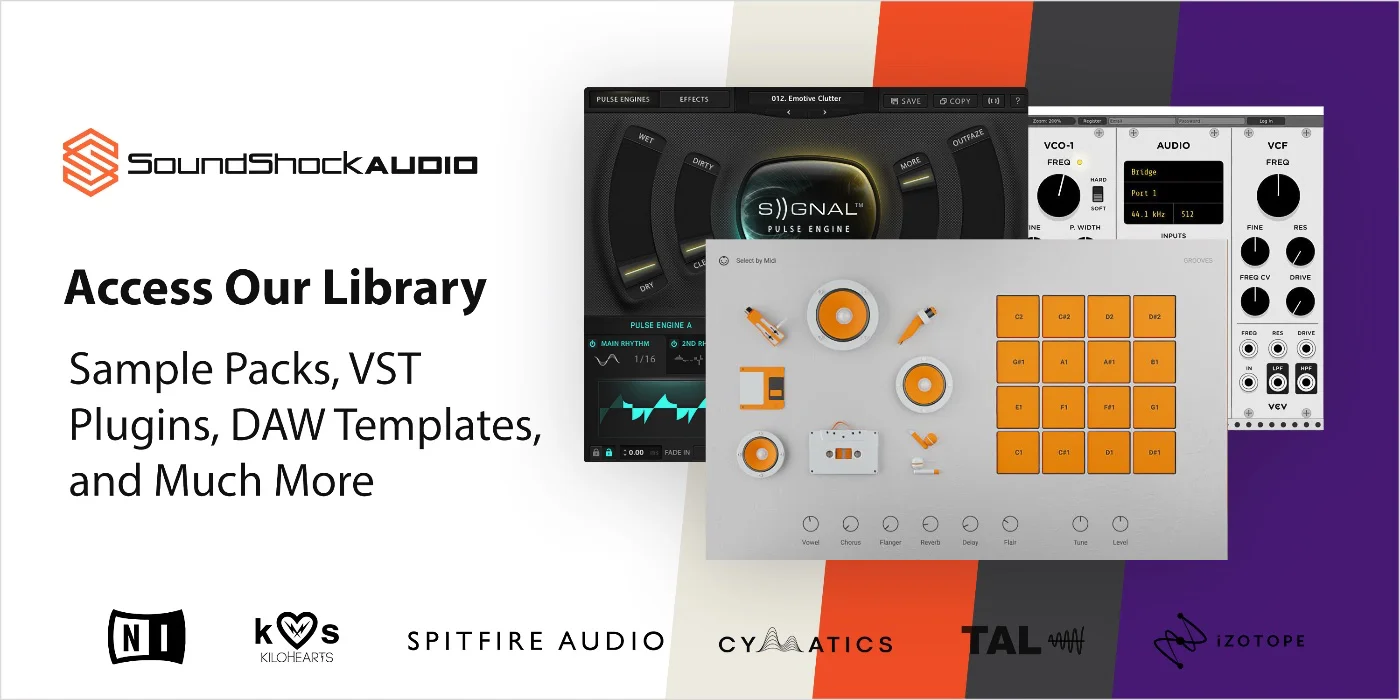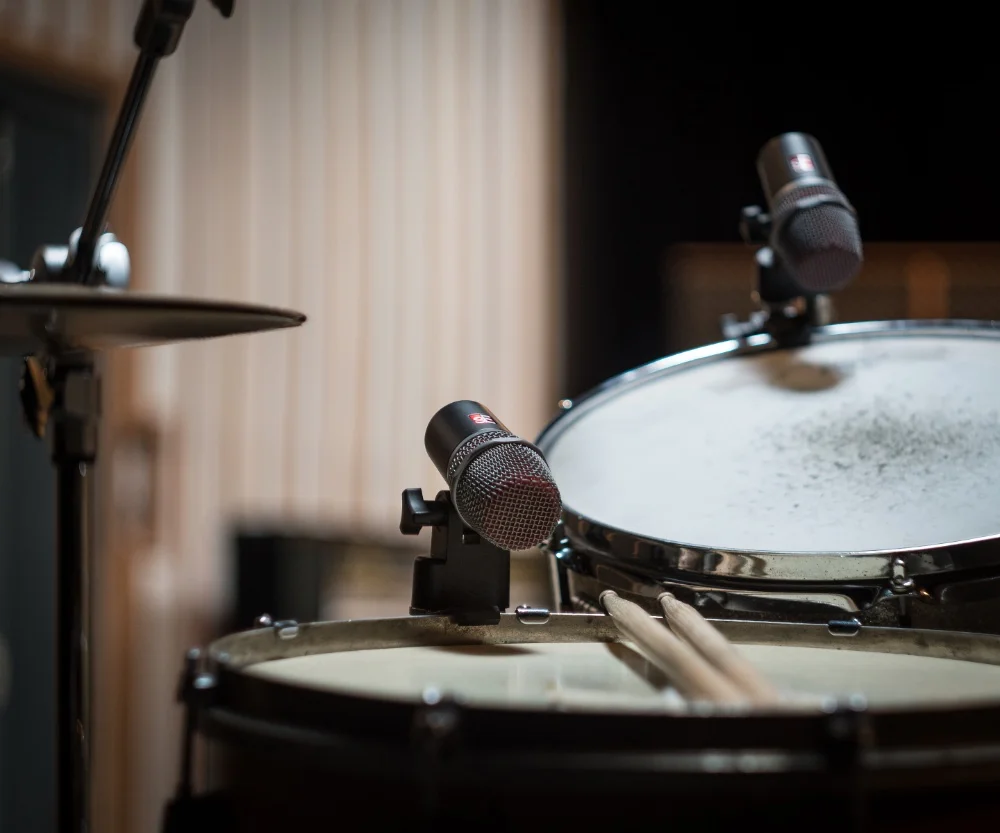Are you struggling to get that perfect drum sound? You’ve probably tried every trick in the book, but still can’t seem to dial in those killer tom tones. Well, have no fear! I’m here to show you the ultimate guide to EQing your Toms and getting that massive sound you crave.
As an audio engineer with extensive experience mixing drums for all types of genres, I know how important it is to get great-sounding drums – especially when it comes to Toms. That’s why I’ve put together this comprehensive guide on EQing Toms so you can achieve a full-bodied tone without having to break the bank or invest in expensive plugins.
In this article, we’ll be taking a deep dive into everything related to EQing Toms: from choosing the right frequency range and learning how different settings affect your sound, all the way up to putting it all together and creating a powerful mix that will make any listener stop and listen. So if you’re ready take your Tom sounds to the next level, let’s jump right in!
Definition Of Eqing
EQing is the process of using equalization techniques to modify or manipulate frequency levels within an audio signal. It’s commonly used in production and mixing stages, with a goal of achieving a desired sound. Equalizing drums, for example, involves either boosting or cutting certain frequencies to make them stand out or blend more into the mix. This can be done in various ways – through parametric EQs, graphic EQs, dynamic EQs or multiband compressors.
When it comes to drum equalization, understanding what specific frequencies correspond to each tom-tom will help you get that perfect sound you’re aiming for. Identifying low frequencies in toms requires careful listening and experimenting with different settings until you find the right balance between all the elements of your track.
Identifying Low Frequencies In Toms
Now that we understand the basics of EQing, let’s dive into identifying low frequencies in toms. To get a great drum sound, it is important to have knowledge on how to identify and manipulate these frequencies within each tom.
Here are some key points to consider when identifying low-frequency content in your drums:
Frequency Range – Low frequency range for toms generally lies between 30Hz – 250 Hz depending on the size of the drum and tuning level. This means that you may need to adjust this based upon what type of tom you’re working with.
Smaller Toms – For smaller toms like 10″ or 12″, aim for around 100 Hz as a starting point.
Larger Toms – With larger toms such as 14″ and 16″, focus more towards 50 Hz as a starting point.
Drum Sound – Listen carefully for any low end rumble or mud in the tom sound which can be caused by too much energy in the lower frequencies and can muddy up the overall mix. If there is an excessive amount of presence in this area then use an EQ cut to reduce it accordingly.
By understanding where these frequencies lie, you will be able to better shape your tom sounds and create clarity across all elements of your mix! Now you’re ready to move onto enhancing mid-range frequency in your toms…
Enhancing Mid-Range Frequency In Toms
Mid-range frequencies can be the trickiest to get right when eqing toms, but they are essential for achieving the perfect drum sound. When adjusting mid-range frequency in toms, it’s important to remember that too much boost or cut will negatively affect the overall tone of your drums. To enhance mid-range frequency in toms, start by boosting around 300 Hz and adding a shelf at 2 kHz and 4 kHz. This should give you a nice punchy low midrange with an airy top end. You may also want to experiment with cutting some frequencies between 500 Hz – 800 Hz if there is mudiness present. This can help bring clarity and definition to your tom sounds without compromising their fullness. As always, use your ears as the final judge! Be sure to adjust levels carefully, making small increments until you find what works best for your particular track. With subtlety and patience, you’ll have those mids sounding just right before you know it!
Adjusting High Frequencies In Toms
Now that we’ve discussed enhancing mid-range frequencies in toms, let’s move on to adjusting the high end. High-frequency sounds are essential for achieving a balanced and full tom sound; however, they can easily become too bright or harsh if not EQed correctly. So how do you get the perfect drum mix with just the right amount of high-end? Here’s what you need to know about tom EQ settings.
| Frequency | dB Gain | Bandwidth/Q |
|---|---|---|
| 4k | -2 | 0.5 |
| 6k | +6 | 1 |
| 11k | +3 | 1.5 |
The first step is to dial in a shelf around 4 kHz and reduce it by 2dB using a Q value of 0.5 – this will help tame any potential harshness without taking away from the overall sound of your drums. You then want to boost slightly at 6kHz (around +6dB) with a wide Q setting (1) for added clarity and presence, as well as an additional bump of 3dB at 11kHz (with a narrow Q setting of 1.5). This combination should give your toms plenty of attack and sizzle while still sounding even and natural within the overall mix.
With these adjustments made, you’re now ready to balance out the tone of your toms with the rest of your instruments so everything sits perfectly together in the final mix!
Balancing The Tom Sound With The Mix
Ah, the age-old question: how do you balance a tom sound with the mix? You know that when it’s done right, it can truly bring your track to life. But getting there isn’t always easy! Here are some tips for making sure your drums hit just right in the mix:
- EQ each drum separately – Don’t try to EQ all of your toms as one group. Each tom has its own unique tone and needs separate treatment.
- Listen for which frequencies need cutting or boosting – When soloing the drums, listen carefully for any frequency build-up or dips that need to be addressed. If a certain range is too muddy, use an EQ cut; if something sounds thin, boost accordingly.
- Be mindful of phase cancellation – When mixing multiple tracks together, pay attention to possible phase cancellations caused by overlapping frequencies from different mics on different drums. Try reversing polarity on one mic and see if this helps improve the overall blend between them.
- Tailor the low end – Too much low-end energy will make your mix sound murky and unfocused; not enough makes it weak and uninspiring! Experiment with various settings until you find what works best for your particular song arrangement and production style.
Now that we’ve covered balancing our tom sound with the mix, let’s move on to some useful tips for mixing multiple toms…
Tips For Mixing Multiple Toms
Now that you’ve balanced the tom sound with your mix, it’s time to move on to eqing multiple toms. When mixing multiple drums in a kit, it’s important to consider how each of them will fit together sonically and how they’ll work within the overall mix. Here are some tips for eqing multiple toms:
First, start by adjusting the frequencies separately. This means boosting or cutting different frequency ranges for each drum individually so that their sounds don’t overlap too much when played together. For example, if one drum has more mid-range than another, you might want to cut those frequencies from one while boosting them in the other. You can also boost low range on both drums but then adjust which one is louder depending on what fits best in the mix.
Another step you should take when eqing multiple toms is making sure that there is separation between them at all times. That way, even when playing simultaneously, each individual tom still stands out clearly without competing against each other or clashing with any other instruments present in the track. Keep this balance throughout the entire process and make adjustments as needed until you get just the right drum sound balance!
Common Mistakes To Avoid
As the saying goes, “An ounce of prevention is worth a pound of cure.” When it comes to eqing drums, there are a number of mistakes that can be easily avoided. Here we will discuss some common mixing and eqing missteps when trying to get the perfect drum sound.
| Mistake | Low Frequency | Mid-Range Frequency | High Frequency |
|---|---|---|---|
| Boost too much | muddiness | overbearing | harshness |
| Cut too much | loss of punch & weight | thinning out | brittle sound |
Boosting low frequencies too much leads to an overall muddy sound in your mix. The same applies for cutting lows as this will lead to a lack of punch and weight in your tom sounds. With mid-range frequencies it’s easy to go overboard with boosting or cutting here as well leading to overly bright/harsh tones on one hand or overbearing results on the other. Lastly, if you boost high frequencies too much you may find yourself dealing with a harsher than necessary tone. Or conversely, if you cut highs excessively you will end up with a thinner sounding tom with less presence and definition.
In order to achieve a balanced tom sound, use eq judiciously while remembering these points – boost sparingly and cut even more so. This practice should help keep your mixes free from any unwanted artifacts while still allowing them space within the mix itself!
Frequently Asked Questions
What Is The Best Type Of Microphone To Use For Recording Toms?
When it comes to recording toms, the right microphone type can make a world of difference. When considering what mic is best for tom miking, there are several things an audio engineer/producer/mixer with EQ specialization should consider:
- The size and shape of the drum
- How much control you want over the sound of each individual tom
- The environment in which you’re recording
- Whether or not you need stereo options
The most popular types of microphones used for recording drums are dynamic and condenser mics, both having their own distinct benefits. Dynamic mics tend to be more durable and less sensitive than condensers, so they’re great for capturing loud sources like toms without risk of distortion or clipping. On the other hand, condenser mics provide superior detail and clarity when compared to dynamics – perfect if you need that extra bit of definition from your kick drum or snare!
For those looking for even more control over their sound, ribbon mics offer a unique alternative as well. These vintage style mics create a warm tone that’s ideal for adding depth and character to any instrument in a mix – including toms! With such an array of choices available, no matter what kind of sonic palette you’re working with, there’s sure to be something out there that will fit your needs perfectly.
So whether you’re after the punchy attack of dynamic mics, the detailed response of condensers, or the warmth offered by ribbons – knowing your options before starting your EQ journey is essential in getting that perfect tom sound.
How Can I Make The Toms Sound More Natural?
Getting the perfect natural sound for your toms can be tricky. To achieve that classic tom tone, a combination of mic technique, dynamic range and EQing is key. When it comes to microphone techniques for recording toms, choosing an appropriate mic type is essential. Depending on the size of the drum and depth of sound desired, condenser mics or dynamic mics may be used; either one will provide a unique result depending on what kind of tonal quality you’re going for.
EQing techniques are critical when attempting to get the right level of clarity with your toms. If you want more presence in your drums then boosting certain frequencies with an equalizer can help make them sound fuller and punchier without overwhelming other elements in the mix. On the flip side if there’s too much low-end energy coming from your toms cutting those same frequencies could improve clarity while keeping their dynamic range intact. Lastly, blending different levels of compression along with some reverb/delay can really bring out subtleties in your tom sounds giving them more life and dimension within your track.
In order to get that natural sounding tom tone all these components need attention so experiment until you find what works best for each individual drum as well as how they fit into the overall song structure. With practice and patience, you’ll soon have great sounding toms that will add depth and character to any piece of music!
How Much Eq Should I Apply To The Toms?
When eqing toms, it’s important to know how much eq should be applied. This is key in achieving a natural sounding drum sound that translates well across different playback systems. There are several techniques you can use when determining the right amount of eq for your tom frequencies.
Start by listening carefully and making small adjustments as necessary. When setting an equalizer level, listen closely to the tom frequency range and make sure no single frequency becomes too dominant or too weak compared to the other elements of your mix. Make sure not to boost any frequencies beyond what’s needed; boosting unnecessarily will lead to unwanted distortion and muddiness. When cutting back on certain frequencies, pay close attention to the effect it has on the overall sound of the tom before reducing further.
Eqing adjustments need to be made with precision since every element plays a role in creating a balanced mix for drums. It may take some trial and error until you get just the right amount of eq for your desired tone, but once you do, you’ll have achieved that perfect drum sound!
Can I Use Compression On Toms?
Yes, you can use compression on toms. Compression is a great tool for controlling the dynamic range of your drum sounds and getting that perfect tom sound. When it comes to compression settings, there are several techniques you can employ when compressing toms:
- Start with low ratios (2:1 or lower)
- Attack/release times should be adjusted depending on the type of tom sound desired (e.g., short attack time / long release time = punchy snare tone; longer attack time / shorter release time = more sustained tonality)
- Experimentation is key! Play around with different levels of gain reduction in order to find what works best for your particular drum mix.
When using compression on toms, make sure not to over-compress them as this will lead to a muddy sounding mix. It’s also important to note that too much compression can obscure transients in the signal which will ultimately reduce clarity in the overall drum sound. As such, try dialing back the amount of compression applied until you achieve an even balance between transient definition and dynamic range control. With careful adjustment of these parameters and some experimentation, you’ll soon have those perfectly eq’d tom drums!
What Is The Best Way To Blend The Tom Sound Into The Mix?
When it comes to blending the tom sound into your mix, there are several techniques you can use. Tom-blending and tom-mixing both require a keen ear as well as knowledge of how to properly use EQ for each individual part of the drum set. It’s important to understand how different frequencies interact in order to achieve the perfect balance between all the elements in your mix.
When blending toms, start by cutting out any unwanted frequencies that might be clashing with other instruments or creating an unpleasant tone. Identifying and removing these frequencies is essential before attempting to blend them together. Once this has been done, focus on boosting certain tom frequency ranges while attenuating others until they fit perfectly within the overall mix. This will give you more control over their levels when blending them together and ensure that none of the sounds stand out too much or become too loud. Additionally, panning each tom slightly will help create a more dynamic soundscape which further adds to the overall texture of your mix.
In summary, mixing and blending toms requires careful consideration of each instrument’s frequency range as well as its place within the overall sonic landscape. With proper technique and understanding of EQ principles, you can get your drums sounding great in no time!
Conclusion
I. After years of experience in the studio, I can confidently say that achieving a great-sounding tom sound is not as hard as it seems.
II. With the right microphone choice and proper EQing techniques, you can get your toms sounding just like they were meant to – loud, punchy and full of life! Don’t be afraid to experiment with different settings and always trust your ears; if something sounds wrong, tweak it until it’s right. It may take some time, but the results will speak for themselves!
III. You don’t need to be an audio engineering guru to make your drums sound professional – all you need is patience and practice. I guarantee that after following this guide, you’ll have a drum sound that would make any producer proud!
Looking for a one-stop-shop for all your music production needs?

Subscribe to SoundShockAudio and access our vast library of tools, including VST Plugins, DAW templates, sample packs, and more.
Need more help when it comes to EQing check out the article, how to eq piano.


